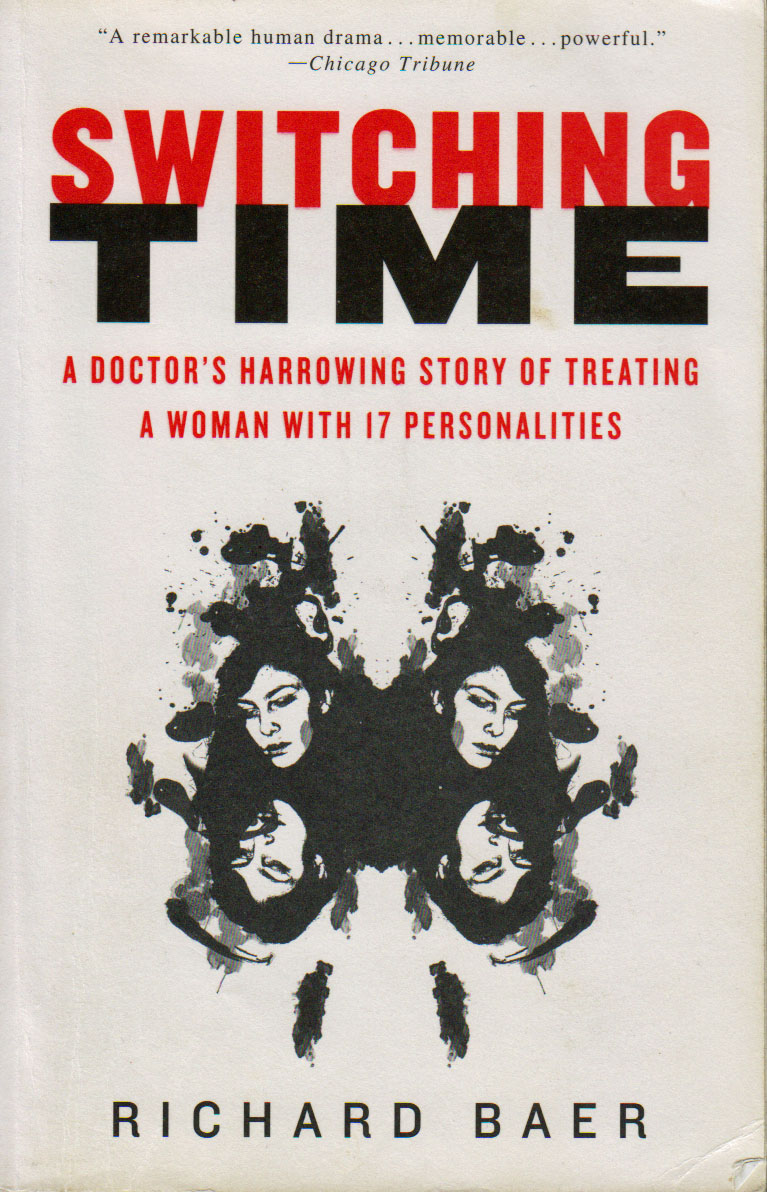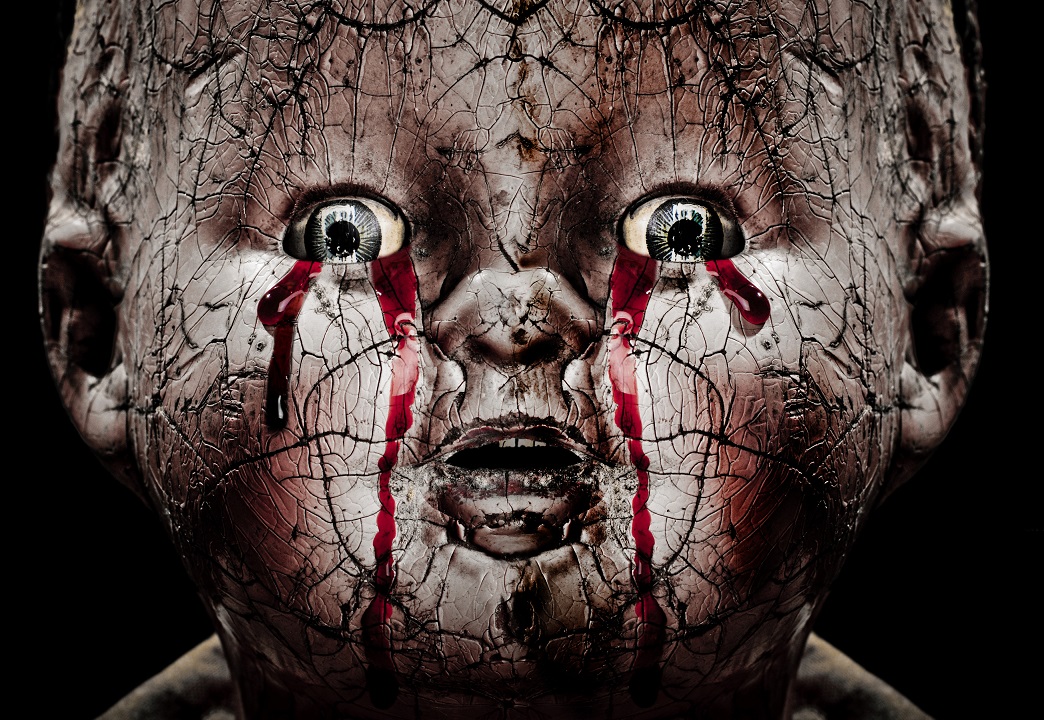
Richard Baer’s Switching Time is a gripping eye-fest of a book which sucks you all the way in to the end of socks and won’t spit you back out until that final word has been read and comprehended. It’s raw, it’s powerful, and it’s anecdotal living proof of the darkest, most diabolical aspects of human nature–everything we despise about ourselves as the most cerebrally evolved creature of the animal kingdom. Or would cerebrally bereft be a more fitting descriptor? If the biographical testimony in Switching Time is anything to go by, then Homo sapiens must be the most unflattering and unflavoured of Mother Nature’s creations. Which parent figure is capable of remorseless displays of savagery and brutality towards their own progeny, I ask? We don’t really see this trait in the dispositional constitution of any evolved organism, at least not until we come across the appearance of that blessed two-legged beast with capacities for analytical reasoning and semantic language. Perhaps what we define as intelligence and IQ isn’t as constructive as we believe it to be!
At any rate the inaugurating chapter gives nothing away of the gut-wrenching horror at the heart of this contemporary tragedy, one certain to overwhelm the reader when it rolls onto the pages like a frothy tsunami. There’s nothing remotely unique or conspicuous about Karen Overhill when she attends a first appointment with psychiatrist Richard Baer. She’s just another disgruntled housewife who has mentally capitulated to the cumbersome demands of housework and the perpetual nagging of a husband and children dependent on her. She feels imprisoned with no discernible way out, and has become clinically depressed as a result; at least that’s what Baer is contented to believe from her dishevelled presentation and demeanour. Like most psychiatrists he is rather swift in recoursing to psychotropic medication, believing successive prescriptions of an antidepressant might spontaneously combust the underlying problem and sugar-coat the existing symptoms with an inflated sense of jovial contentment. Little does he know that Karen’s problem is not merely a drop in the ocean–it’s an ocean in itself. In perusing the surface Baer comes to the understanding that her recurring suicidal thoughts may be an epiphenomenon of ongoing abuse at the hands of her husband Josh but further prying allows the more profound nature of the traumatic affect to manifest, making it rather impossible to evade the conclusion that the remembered present is merely the tip of the iceberg.
As the therapeutic relationship deepens and breaks new ground, all psychological defences erected by Karen to thwart the possibility of further primal wounding come down like a set of dominoes. One momentous moment long ago she had experienced an empathic connection with her paternal grandmother, sowing the invaluable seed of trust and faith into the fabric of her young psyche. In watering this seed with psychoanalytically-informed psychotherapy Baer bridges present and past so that traumatic memories seep into Karen’s self-awareness as if they were noxious gases from volcanic fumaroles. Once spurred to action the process is impossible to halt. She remembers being humiliated and degraded for incidents outside her personal sphere of control. She remembers the weekly beatings with the buckle end of a belt for trivial matters; the austere, barbaric punishments waiting in the wings if she levelled a complaint. She remembers her formative relegation to the sphere of receptacle, an object or non-being to be used for sexual gratification and subsequently discarded; she remembers the merciless rapes, the sadistic tortures with sharp, curved, and hooked implements, and the quasi-religious Satanic rituals whose purpose it was to deprive her of dignity and honour, our cherished human birthrights. She remembers a life of Hobson’s choices, the futility of deploying willpower. Deplorably the agents responsible for this abomination, this crime against the sacred human spirit, were immediate relatives–her father and paternal grandfather.
And how might the coagulating personality of an innocent child survive an environment hostile to the development of stable, empathic relationships without having to forfeit the sum of its life force completely? The manner is surely stranger than fiction. Acting in service of the whole psyche it deploys the primitive defence of dissociation as a way of dampening the brute force of the traumatic affect. The one part becomes two, the two becomes four, and the four becomes eight, shattering integrated experience and perception into isolated cognitive and emotional islets like shards of a broken mirror. Karen Overhill belongs to a miniscule demographic, a total of less than one percent of the total population unlucky enough to have suffered such far-ranging impairments to their overall personality structure. Each time she was subjected to the torturous machinations of her diabolical despots, another self-conscious receptacle would form to contain the traumatic memories and localized pains associated with them. With each projective split the likelihood of creative expression in the social synapse was compromised further for the sake of survival. Over the course of recent history this psychopathological condition has been christened and rechristened multiple times–everything from double consciousness and duplication of personality to subliminal consciousness and multiple personality. Nowadays it is recognized under the more secular psychiatric taxonomy of Dissociative Identity Disorder (DID).
Overhill was the receptacle for no less than seventeen alters. Just short of two years Karen Boo suffers from excruciating pain and emotional deprivation. Sidney, a mischievous seven year-old boy, is a wily trickster and pathological thief. Sweet-faced Claire, also seven, is indulgent when it comes to chocolate milk and has trouble trying her shoelaces. Six year-old Thea has spent an inestimable time in the company of doctors and nurses at the local hospital and believes she can alter her body chemistry at will. Having suffered a broken jaw, the ten year-old Karl can’t articulate properly; it is he who flirted openly with martyrdom to shield Karen from the most horrendous physical insults imaginable–the floggings with extension cords, the prodding of erroneous zones with needles, the rapes, the electric shocks and what not. Like Karl, thirteen year-old Julie is a crippled asthmatic preserving some of the most potent memories of the abuse and is dying as a result.
Jensen, an eleven-year African-American, does the creative potentialities of the human spirit justice with his artistic pursuits and seeks retribution for the moral transgressions against Karen. On the other hand the promiscuous, rowdy, and unorganized fifteen year-old Juliann has opted for an empirical kaleidoscope from which to view the explosive phenomena; she is the detached observer, chronicling the abuse but refusing to accept it as her own. Twenty one-year old Karen, one of three alters in possession of the same name, is a philanthropist, a wife, and a mother who feels none of the collective wretchedness; she is spritely, spirited, and seeks contentment through the nurture of empathic relationships. As the oldest and most mature of the lot, left-handed Holdon is a breath of Arian air equipped with a toolbox of true leadership qualities, moral standards, and practical talents. He is guardian angel, nurturer, and governor wrapped in one–the real man in Karen’s life.
If we bother to scrutinize the relationship of alters to one another, it soon becomes clear that they fulfil functions normally projected onto elements of the consensus environment. Some alters are unwillingly trapped in a freeze-frame of eternal torment and represent primal wounding whilst others provide support in the service of true guardianship and nurture. Thus we have a phenomenal bifurcation into an inferior ontological plane containing those who are forever wounded and a higher one encompassing those who are forever watchful and protective of Karen. As one would expect, the former are in a deplorable state of psychosomatic health whereas the latter are immune to distress and disease. Furthermore the wounded alters operate outside the spatiotemporal world while the guardians are confined to that world. When the alters partake of the same experience, the ontological boundaries separating them lose their rigidity and opacity so that localized mental stigmata and the physical deficits to which they are connected become shared. Perhaps the greatest empirical question posed by DID relates to the actual nature of alter formation–how does integrated self-awareness actually split?
The most adequate step-by-step phenomenological explanation of this is given by the lead alter Holdon just before the final integration. “When a new experience came up that no alter could handle, a new alter was born. Each had their own role and purpose. Well… what happens is… we would all get together when Karen had this terrible need. The need grew into a wish, and the wish was transformed into an alter. I came from Karen’s wish for a father. Claire came from Karen’s wish to be a perfect little girl, pure as can be, and to be liked by everyone. Sidney came because Karen wanted to be the little boy the father wanted. Sidney needed to steal for the father without guilt, and Karen couldn’t do it. When Karen got depressed, she started to make new alters, but Katherine and I put a stop to it. Karen started to realize not everybody loses time and hears voices. She was afraid if I told anyone, they’d think she was schizophrenic and she’d be locked up.”[1]
Holdon’s testimony raises some interesting questions about the mind-brain relationship. In their book A Universe of Consciousness: How Matter Becomes Imagination (2000), Gerald M. Edelman and Giulio Tononi recourse to comparative studies between the normal and pathological human brain for an etiological explanation of the dissociative disorders [to which DID belongs] as syndromes whereby the functional interactivity between neural clusters underpinning the usually integrated functions of consciousness, memory, identity, and perception of an environment have either been disrupted or disintegrated.[2] According to this working hypothesis the shape-shifting and differentiated patterns of neuronal clusters rapidly interacting to facilitated integrated conscious experience are disconnected during traumatic events, leading to all sorts of splits and ruptures in integrated perception. By means of bridging perspectives of DID offered by phenomenology and cognitive neuroscience, we see that alter formation is tantamount to a neurological dampening of re-entrant interactions between psychic functions. If we can attach any empirical validity to Holdon’s elucidation, then an unconscious need, a volition birthed within the scope of self-awareness, can under certain circumstances act directly upon the anatomy and physiology of the brain–a case of mind over matter. Extending this rationale a little further we ascertain that Baer’s reintegration of the seventeen alters through the deployment of an alpha-wave trophotropic state of consciousness (i.e. hypnosis) in his psychoanalytically-informed psychotherapy is just another form of the same top-down process in action.
Switching Time will give way to the empirical ground beneath your feet so that you somersault like an acrobat down into the dark rabbit hole, down into a subterranean space from where you’ll be forced to confront and reflect upon such modern intellectual impasses with all their scientific and philosophical implications. Don’t pass up the opportunity for such an eye-opening armchair experience–you’ll regret it!
The Karen Overhill case is discussed in much more detail in the context of psychosynthesis, Roberto Assagioli’s model of personal and transpersonal development, in my e-book Perspectives on the History of Dissociation. You can purchase this book by clicking on the link below:

Perspectives on the History of Dissociation
[1] Richard Baer, Switching Time: A Doctor’s Harrowing Story of Treating A Woman with Seventeen Personalities (New York, USA: Random House, 2008), pp. 319-320.
[2] Gerald M. Edelman and Giulio Tononi, A Universe of Consciousness: How Matter Becomes Imagination (New York, NY: Basic Books, 2000), pp. 65.









